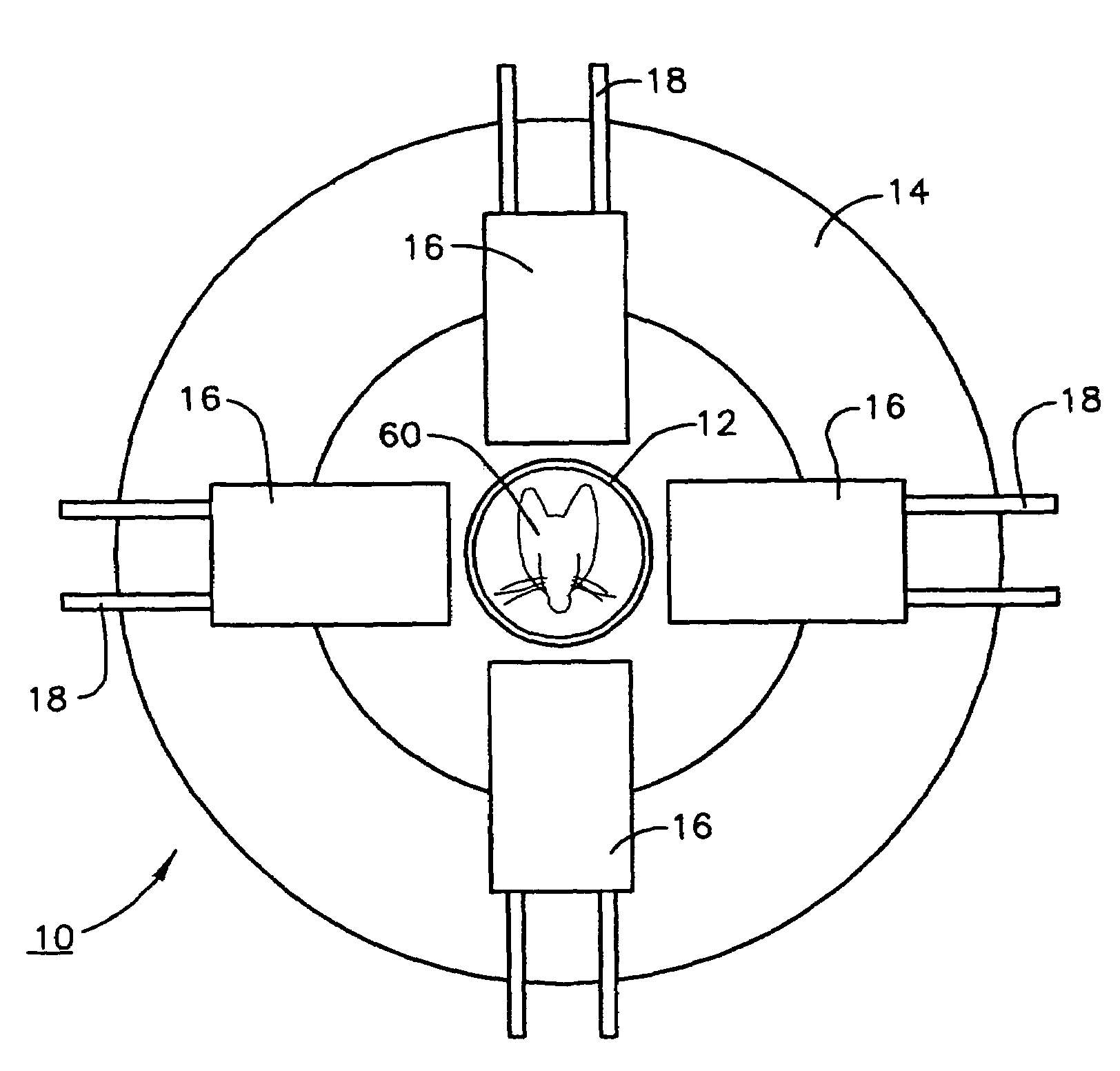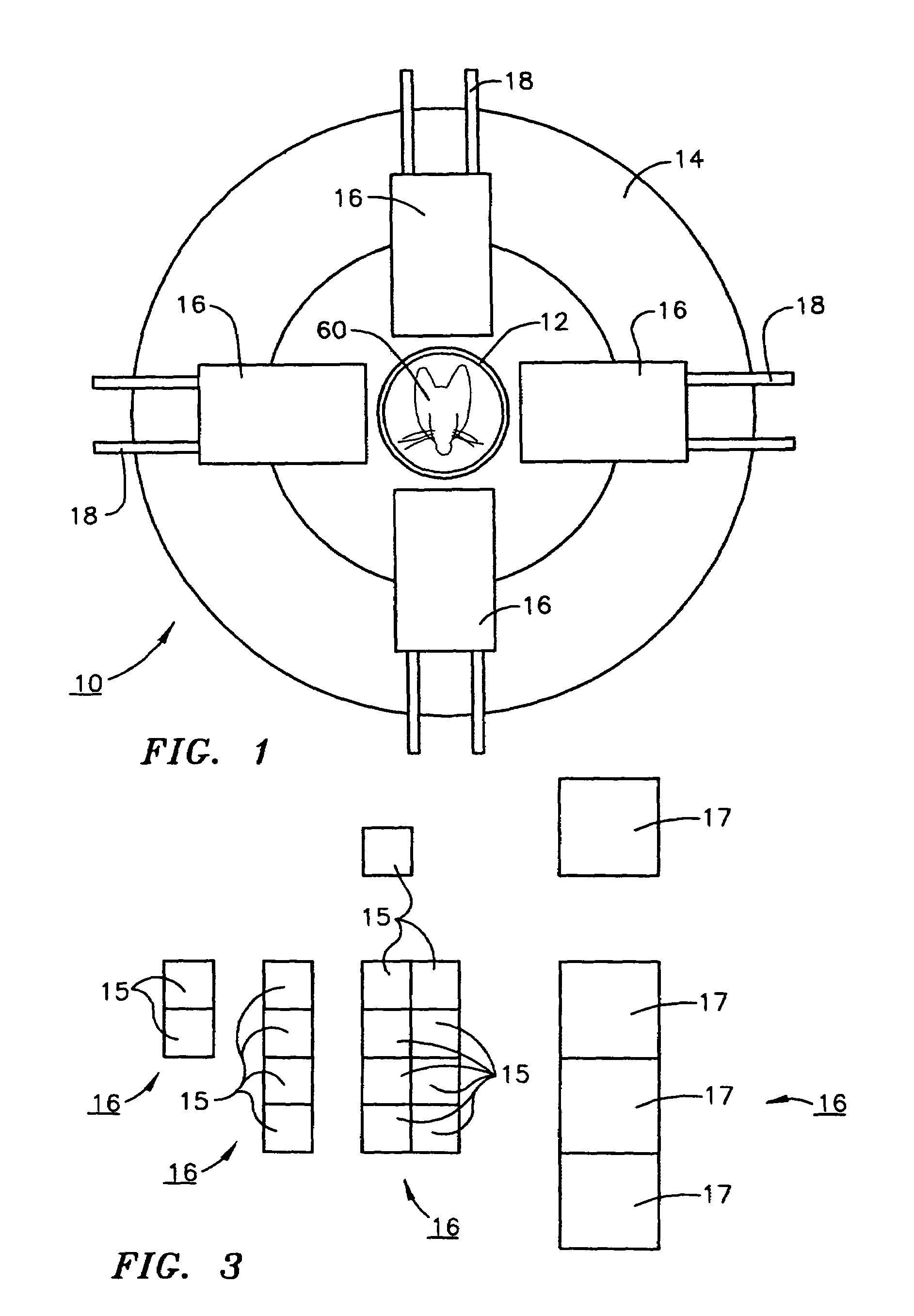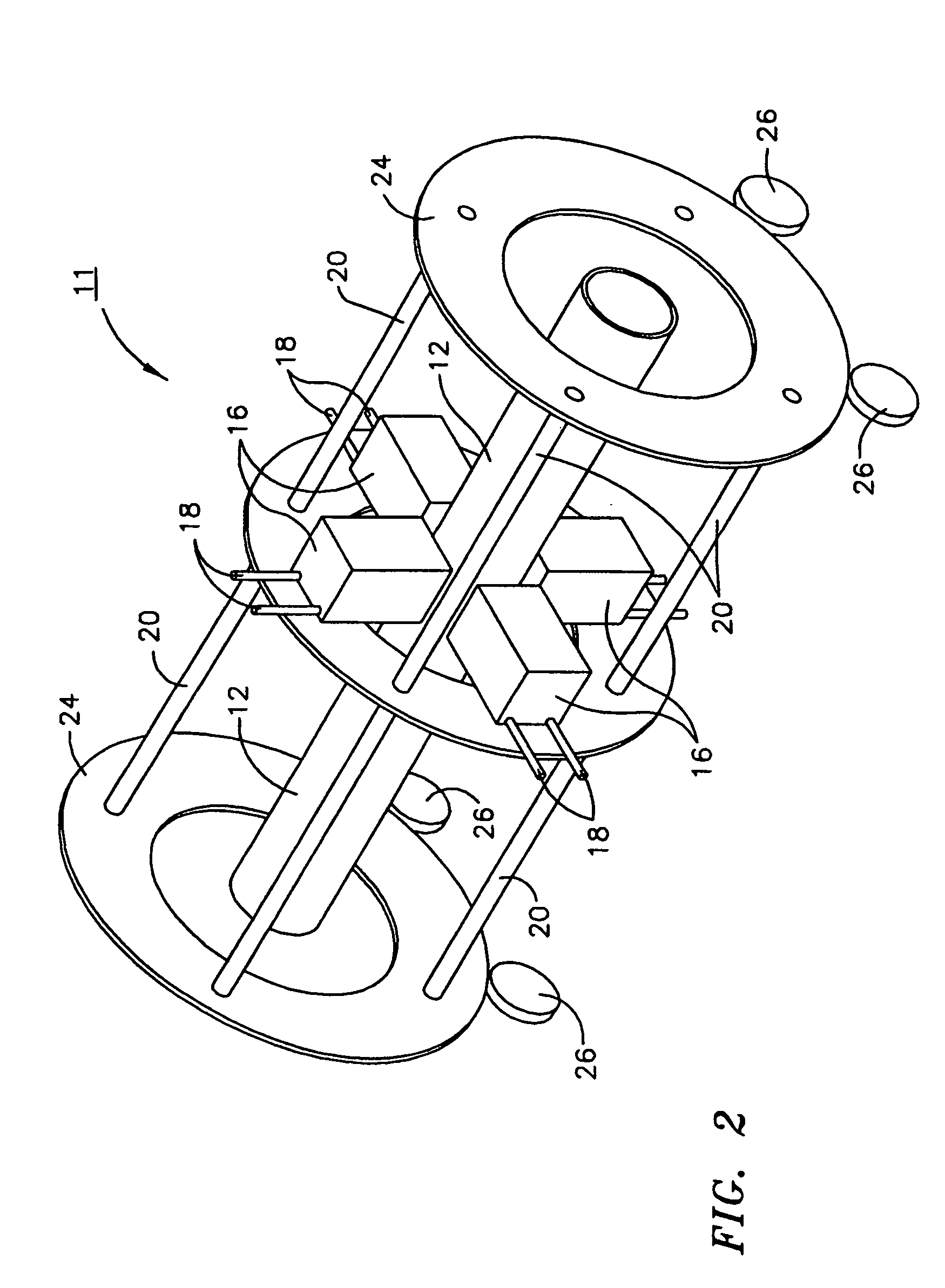Simultaneous multi-headed imager geometry calibration method
a multi-headed imager and calibration method technology, applied in the field of spect imaging of small animals, can solve the problems of loss of this important dynamic information, errors (artifacts) showing up in the reconstructed image, and the technique requires complicated system modeling and assumptions about the dynamic, and the special clinical spect system is at present limited to imaging the brain
- Summary
- Abstract
- Description
- Claims
- Application Information
AI Technical Summary
Problems solved by technology
Method used
Image
Examples
Embodiment Construction
[0044]What follows, is a detailed description of one SPECT multi-headed imager system in which the calibration system described herein will find use. While the calibration system of the present invention is described primarily in connection with such a multi-headed SPECT imaging system that finds use in the study of small animals, it should be noted that the calibration system of the present invention will be useful in the calibration of any multi-headed imaging system, PET, X-ray, etc. that rotates about a subject under study and utilizes imaging heads that are “gantry” mounted.
[0045]A knowledge of the dynamic biodistribution on a short time scale of minutes or even seconds of an injected or otherwise animal body administered imaging biomarker used either in diagnostics or in treatment, is crucial in many biological studies requiring measurement of blood flow distribution after biomarker injection, and subsequent uptake and washout by all organs, for example, in studies of the toxi...
PUM
 Login to View More
Login to View More Abstract
Description
Claims
Application Information
 Login to View More
Login to View More - R&D
- Intellectual Property
- Life Sciences
- Materials
- Tech Scout
- Unparalleled Data Quality
- Higher Quality Content
- 60% Fewer Hallucinations
Browse by: Latest US Patents, China's latest patents, Technical Efficacy Thesaurus, Application Domain, Technology Topic, Popular Technical Reports.
© 2025 PatSnap. All rights reserved.Legal|Privacy policy|Modern Slavery Act Transparency Statement|Sitemap|About US| Contact US: help@patsnap.com



